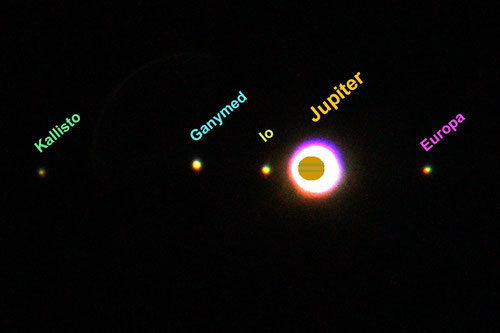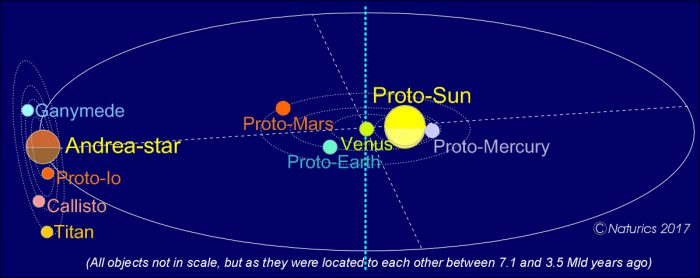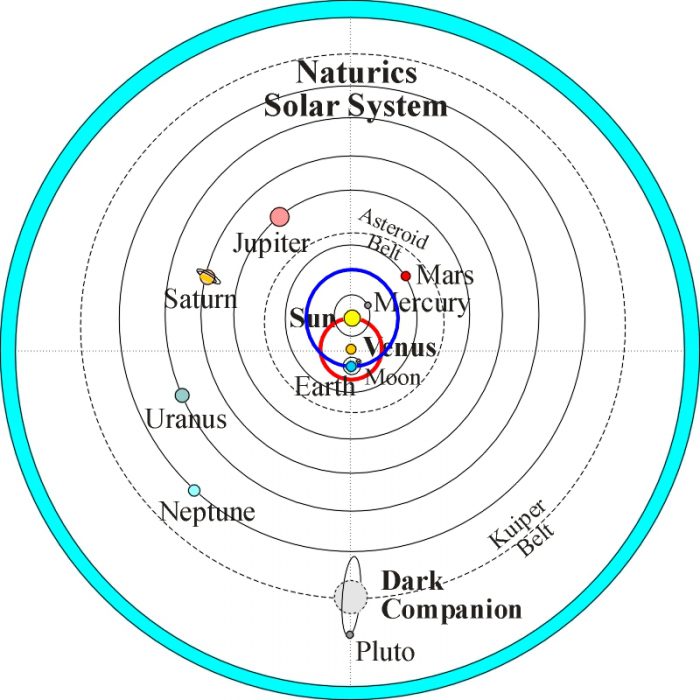On the website of the Institute of Planetary Research of the German Aerospace Center (DLR) we read:
"JUICE is an ESA mission that was selected in 2012 as the first L-class mission (L stands for 'large') within the Cosmic Vision programme. The aim is to explore Jupiter, its moons and its magnetosphere. In particular, Jupiter's moon Ganymede will be studied in detail. JUICE is thus the first mission ever to enter orbit around a moon of another planet. The launch is planned for June 2022 with an ARIANE 5 ECA launch vehicle from the European spaceport Kourou. ... After a flight time of more than 7 years, the space probe will enter an orbit around Jupiter and initially orbit the giant planet for about 3 years. During this phase, fly-bys of the moons Europa, Ganymede and Callisto will take place, which serve both scientific purposes and are necessary for orbit corrections of the space probe ('gravity assists'). In addition, Jupiter itself and its magnetosphere will be studied in detail. Afterwards, the spacecraft will enter a polar orbit around Ganymede and, in the final phase of the nominal mission, orbit it at an altitude of about 500 km. During this part of the mission, data will be collected that will show whether there is a global water ocean beneath the ice crust of Ganymede and at what depth it lies. The observations made so far for Europa and Callisto also point to oceans under the moons' ice crusts. This is why the Jupiter system, along with the planet Mars and Saturn's moons Titan and Enceladus, is of particular importance in the search for extraterrestrial life forms in the Solar System. The overall goals of the mission are (a) to explore habitable worlds in systems with a central gas giant, and (b) to explore Jupiter as an archetype of gas giants."
As Roland Milles presents on his website:
"The four largest moons of Jupiter can be observed with simple optical telescopes. Which explains why they were discovered by Galileo Galilei in 1610. They are also called "Galilean moons" after their discoverer. The largest moon "Ganymede" is also the largest moon in the Solar System. On 31 May 2014, all four moons were visible next to Jupiter at 22:30. In order to show the moons in the photo, the exposure time had to be chosen a little longer, therefore Jupiter was overexposed and looks larger in the photo than it is in reality."

However, our Unified Science tells a very different story about the formation of the system of the four Galilean moons around Jupiter, Jupiter itself, and Saturn with its largest moon, Titan. As the diagram below shows,

the original companion of the primordial Sun, the Andrea-Star had also formed its four primordial planets permitted by the cosmic quantisation rules, similar to the primordial Sun itself. The primordial planets of the primordial Sun were all about 12500 km in diameter, with a density of just over 5000 kg/m³. In contrast, the primordial planets of the Andrea-Star, since they could only form at the edge of the accretion disk where relatively less material was available, were correspondingly smaller and lighter. Their average diameter was about 5000 km and their density just over 3000 kg/m³. They were, from the inside out, Ur-Io, Ganymede, Callisto, and Titan. They all formed (at the latest) 7.1 billion years ago. In the critical turbulent phase of the Solar System's existence 3.5 billion years ago, when the primordial Saturn had fatally struck the Andrea-Star and hurled its nucleus, today's Jupiter, into the interior of the primordial Solar System, today's Solar System was formed.

The primordial Io, Ganymede, and Callisto have remained true to their former centrepiece, the core of the Andrea-Star, today's Jupiter, and have migrated with it into the interior of the system. What remained of the attacking primordial Saturn, today's Saturn, still managed to capture the outermost primordial planet of the Andrea star, Titan, where it has also remained to this day.
In all the confusion, Ur-Io was unlucky and collided with another body. Perhaps it was even Ganymede, which shows clear traces of several collisions from this time. In any case, Ur-Io was dismembered. Its two largest pieces, today's Io and Europa, remained with Jupiter. The other fragments of primordial Io formed the other moons of today's Solar System. Except for our Moon, which was formed from a simultaneous collision of the also fragmented primordial Mars with the primordial Earth. According to our prehistory of the "Galilean moons", today's Callisto is the only moon of present-day Jupiter that still retains its original, 7.1 billion-year-old surface.
This leads to my fifth observation proposal here. One instrument on board JUICE is GALA-Altimeter. One of its goals is to measure elevation profiles of geological surface formations on Ganymede, Europa, and Callisto. So we would have to find a way to use one or other of the "tools" on board the JUICE spacecraft to determine the age of the moons under investigation. This would make Callisto the oldest planet in our Solar System. I am convinced of that. One would only have to somehow persuade the management of the mission to such a rethink. The first contact address would be:
Dr. Hauke Hußmann; Abteilungsleitung; DLR Institut für Planetenforschung, Berlin; Tel.: +49 30 67055-315